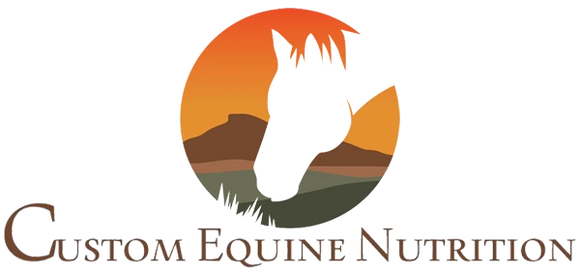Pasture Strategies for Horses with Metabolic Disorders
Managing a horse with a metabolic disorder is a lifetime dedication. Like a child having a peanut allergy, it will always be something you need to be cautious of. There is no such thing as a safe pasture for horses with metabolic disorders. However, there are strategies to reduce the risk. 80% of laminitis is endocrinopathic. At risk horses, such as those who are over-weight, have EMS, PPID, or insulin resistant (IR), cannot tolerate free choice grazing due to the excess intake of sugar and starch during certain environmental conditions.
Pasture management strategies can reduce the risk of high sugar and starch intake. It bears repeating that no pasture is safe for these horses. Know your horses risk level and exercise caution. If your horse’s insulin level is not in the normal range (Cornell:10-40 uIU/ml), has a Cresty Neck Score of three or more, or is hoof sore, use a dry lot or tract system.
Cresty Neck Score System

In Vermont we have Cool Season Grasses, otherwise known as C3 grass. Cool Season grasses thrive in temperatures between 65-75° F, whereas Warm Season (C4) thrive in higher temperatures ranging between 85-95°F. Growth begins in C3 grasses when the temperature is 40-45°F. [1]
There are many factors that affect the sugar and starch content of forage including: species of forage, light, light duration, temperature, nutrients and water, stage of growth, and grazing management practices.
Grass accumulates sugar and starch through the process of photosynthesis. During the day, as the duration of sunlight increases, sugar and starch are produced. Levels peak in the afternoon. Once the sun goes down, respiration begins. Respiration is the process by which the sugars and starches produced from photosynthesis during the day are utilized at night for continued growth. By early morning the sugar and starch has been used up, leaving the time between 3am and 10am a safer grazing time. [2]
When nighttime temperatures drop below 40°F respiration is not active, therefore sugar and starch is not used up for growth. However, it is still accumulating during the day, making grass a large holding pot of sugar and starch. This makes spring, fall and early winter a dangerous time to graze. [3] Seasonal variations in sugar and starch content are well documented. Cooler temperatures during the day, shorter photoperiods (day length) and increased soil moisture make cool season grass very productive in the spring and fall. [4] C3 grasses can adapt so well to the cold that a low rate of photosynthesis can continue under a light layer of snow. Most susceptible horses should be kept completely off green grass during periods with freezing nights. [4] Even an insulating layer of snow may not be enough to create a safe turnout. Check your pastures in the winter, if the base of the grass is still green, then the sugar and starch will have accumulated at an unsafe rate, don’t turn your horses out. [5] [6]

Photo courtesy of safergrass.org
C3 grasses store sugar and starch in the stem base. Have you ever seen a horse nibbling on an over grazed section of the pasture when there are lovely tall blades of grass being completely ignored? Horses can be selective grazers and prefer the shorter, sweeter blades of grass over tall grass. [1] [2] C3 grasses also have a higher genetic potential to accumulate sugar and starch under stressful conditions. [3] Stress, just like temperature, can cause respiration to shut down before photosynthesis will. When this happens sugars and starches will continue to accumulate during the day, but are not used up at night. In these situations, even morning grazing can be dangerous. Some examples of stress are drought, over grazing, or lack of soil nutrients. How do you know if your pasture is over grazed? A good rule of thumb is if manure piles are visible, and horses are grazing close to those manure piles, the pasture is likely overgrazed. [7]
Studies show that higher rates of laminitis are associated with bright, sunny days. On cloudy days the rate of photosynthesis is reduced creating less accumulated sugar and starch. [3] Planting trees around a paddock, or setting one up next to buildings will help provide shade which will limit photosynthetic rates. If you have two cloudy days in a row, it is safer to let your horse out to graze a bit longer on the second day, as very little sugar and starch will have accumulated.
Maintaining your pastures in a vegetative (growing) state will also prevent sugar and starch from accumulating. [8] Seed heads are very high in sugar and starch, and pastures should be mowed prior to it going to seed. [4]
Researchers at North Carolina University conducted a study on the effects of mowing to reduce sugar and starch concentrations. They found that mowing pasture during seasons when sugar and starch concentrations are the highest; spring and fall, can maintain forage in a “re-growth” phase that consumes stored sugar and starch. [8] In this study pastures were mowed to a height of 5.9” prior to seed heads forming.
Additional ways to help your overweight and/or metabolic horses are exercise, muzzles, strip grazing, track systems or dry lots.
Exercise is the #1 insulin buster there is. It will help induce weight loss and increase insulin sensitivity. [9]
Horses on free-range pasture can consume between 1.5-5.2% of their body weight. [10] Muzzles can be beneficial in restricting intake by 80%. [11] Not only do they restrict intake, but they only allow access to the tips of the leaves which are lower in sugar and starch. Short grass is easier for a horse to graze with a muzzle than long grass. Long blades tend to bend under the pressure of a muzzle and flatten parallel to the ground. [11] Turning your horse out during safe grazing times with a muzzle, along with exercise, is a good option for over-weight horses. However, if use of a muzzle creates genuine stress (vs. annoyance) please do not use one.
Strip grazing is a better practice that limiting time on pasture. Strip grazing restricts the amount of grass they have access to by use of a portable fence. Every few days you move the fence to a new section of pasture. Just enough to limit the amount of grass they have access to. Moving the grazing sections limits damage to the previously grazed areas and allows for re-growth. [12]

Photo courtesy of Inside-Out Hoofcare.
When pasture turn out is not a safe option, or during times that sugar and starch would be high, such as on a sunny afternoon, dry lots are your horses best friend. They should be completely bare dirt with no short grass. A small overgrazed pasture is not a dry lot. Remember, over grazed grass is under stress and accumulates sugar and starch in the grass stem closest to the ground. Create a safe dry lot using dirt, manufactured sand, or pea gravel. [12]
Track systems are another option. These consist of a pathway that horses travel around to access different needs, such as water, hay and shelter. The track helps encourage movement, which is always beneficial for our easy keepers or older arthritic horses.
Take Home Highlights
- Introduce pasture more gradually with at risk horses. Start with 15 minutes the first few days and increase grazing time by 10 minutes every 3-4 days. If its mid-summer and you’re switching to a new pasture your horse has not been on during this season, re-introduce the horse gradually. The new pasture could have different environmental elements that create elevated levels of sugar and starch compared to the pasture our horse is used to. Observe your horse closely, if there are any signs of hoof soreness discontinue turning them out.
- Turn out early morning between 3-10am.
- Avoid sunny afternoons
- Longer turnout may be possible on cloudy days.
- Shaded grass will accumulate less sugar and starch, being a safer grazing location.
- Spring and fall are the most dangerous seasons.
- Don’t turn out when night temperatures drop below 40°F.
- Access to grass in the winter is only safe when the grass is completely dead. If it is still green near the base of the stem, then sugar and starch are still present in high quantities.
- Avoid grass that may be stressed due to drought or overgrazing.
- Mowing pastures keeps grass in a state of re-growth so less sugar and starch accumulates.
- Seed heads are extremely high in sugar and starch, mow prior to heads forming.
- Use a muzzle to restrict intake during safe turn out times.
- Use a dry lot or track system for periods that are unsafe to graze.
- And the #1 thing you can do for your horse…. Exercise!

*Information in this article may not be copied or reproduced without consent from
Custom Equine Nutrition, LLC.
Works Cited
|
[1] |
F. I. System, "Cool-season or Warm-season Grasses," Oregon State University, Corallis, 2017. |
|
[2] |
K. Watts, "Factors affecting NSC levels in grass," [Online]. Available: http://www.safergrass.org/pdf/nfcfactors.pdf. |
|
[3] |
CL Wycoff et al, "Effects of day-tine vs. night-tine grazing on hindgut fermentation parameters in fall pasture-fed horses," Journal of Equine Veterinary Science, vol. 33, pp. 338-339, 2013. |
|
[4] |
K. Watts, "Lushness is not a factor in the water soluble carbohydrate or starch concentration of grass.," in Waltham Nutritional Symposium, Center, 2005. |
|
[5] |
K. Watts, "Dead grass and weeds can trigger laminitis," in Equine Science Soc. Nineteenth Symposium Proceedings, Center, 2005. |
|
[6] |
SJ Potter et al, "Comparision of weight loss, with or without dietary restriction and exercise, in standardbreds, andalusians and mixed breed ponies," Journal of Equine Veterinary Science, vol. 33, p. 339, 2013. |
|
[7] |
K. Martinson, "Not all horses should graze," [Online]. Available: https://www.extension.umn.edu/agriculture/horse/nutrition/not-all-horses-should-graze/. |
|
[8] |
Paul Siciliano et al, "Effect of Sward Height on Pasture Nonstructural Carbohydrate Concentrations and Blood Glucose/Insulin Profiles in Grazing Horses," Journal of Equine Veterinary Science, vol. 57, pp. 29-34, 2017. |
|
[9] |
A. Raymond J. Geor, "Nutrition and Exercise in the Management of Horses and Ponies at High Risk for Laminitis," Journal of Equine Veterinary Science, vol. 30, p. 463–470, 2010. |
|
[10] |
B. Annette Longland, "Pasture Nonstructural Carbohydrates and Equine Laminitis," The Journal of Nutrition, vol. 136, pp. 2099S-2102S, 2006. |
|
[11] |
Annette C. Longland et al, "Efficacy of Wearing Grazing Muzzles for 10 Hours per Day," Journal of Equine Veterinary Science, vol. 40, pp. 26-33, 2016. |
|
[12] |
K. Watts, "Managing Grazing for horses "at risk" for laminitis Safergrass.org," [Online]. Available: http://www.safergrass.org/pdf/Managegrazing.pdf. |

